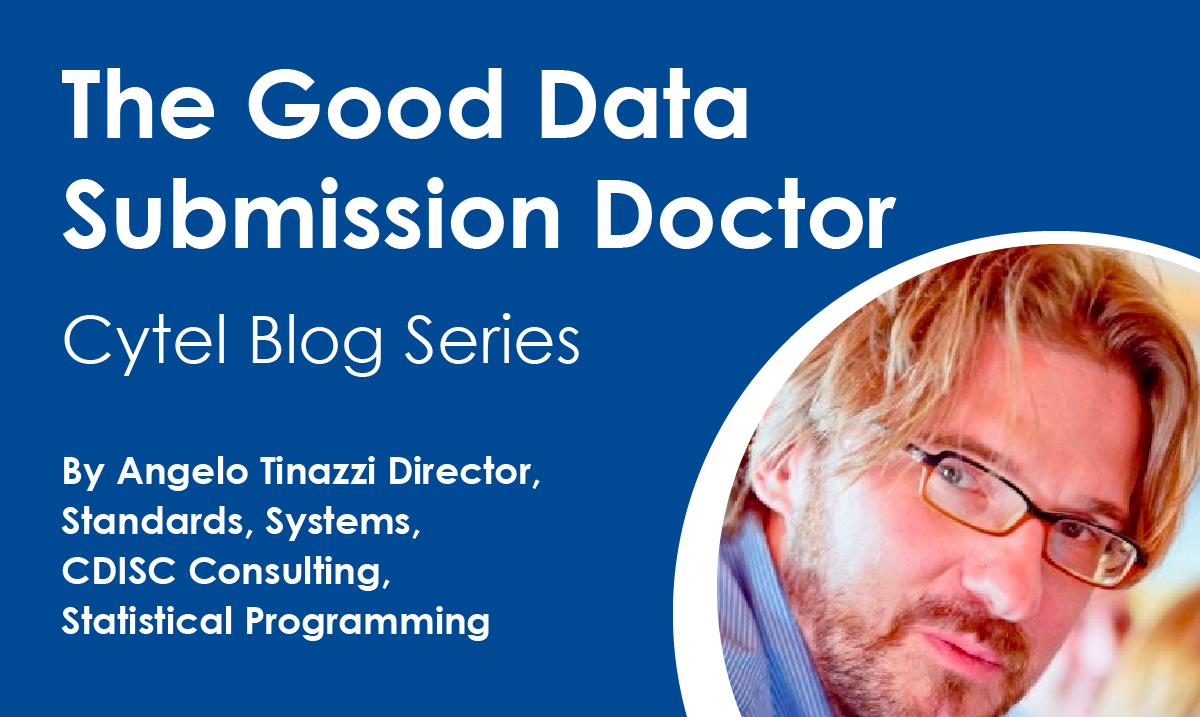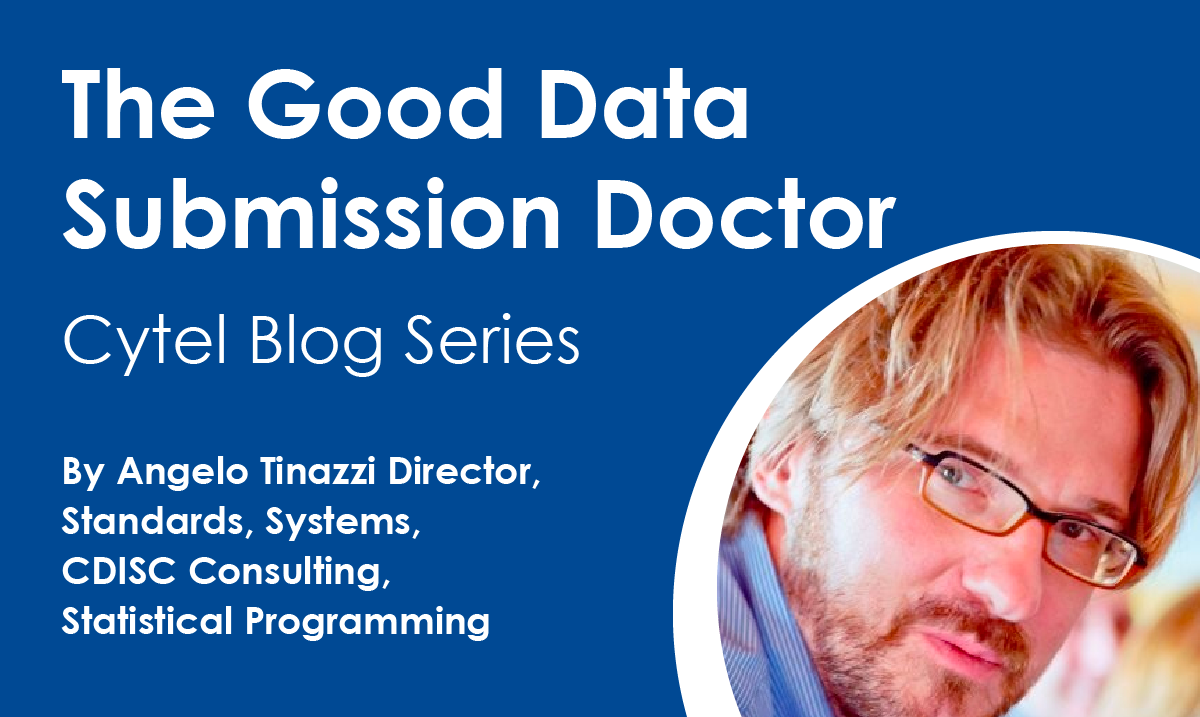Top 5 Frequently Asked ADaM Questions


This is the third in our blog series ' The Good Data Submission Doctor' in which Angelo Tinazzi, Director of Standards, Systems and CDISC Consulting at Cytel tackles key issues in preparing data for CDISC submission. In the previous “Good Data Submission Doctor” blog Angelo discussed his top 5 SDTM FAQ; in this article he turns his attention to the top FAQs for ADaM. Read on for Angelo's insights.
- I’m getting the following error message from P21 “Inconsistent value for AVALC”. This is because in my study for one parameter I have values such as ‘<2’ (in AVALC) that have been imputed to a numeric value of ‘2’ (in AVAL). This was done according to the Statistical Analysis Plan. However I have also numeric results reported exactly as ‘2’ and I get this error even if I set my AVALC equal to Null when my result does not contain and sign
There is no need to have both AVAL and AVALC with non-missing values for a given parameter. My recommendation is to always use AVAL when the result is of numeric ‘nature’, otherwise use AVALC if the result is of ‘character’ nature, but not both. In the issue above I consider your parameter of numeric nature as the value <2 is still representing a numeric result. In such situations you don’t need AVALC and eventually for traceability purpose you can still keep either -- ORRES or –STRESC from the source SDTM domain.
The bottom line is that in most of the situations for an ADaM dataset using a BDS structure, for a given parameter only AVAL or AVALC will be not null. The only situation in which you may have both AVAL and AVALC not null is with a result of character nature, such as Adverse Event Severity collected as Mild/Moderate/Severe (AVALC) where for analysis purposes e.g. to have a way of ordering the severity, you assign a numeric result as 1 for Mild 2 for Moderate and 3 for Severe (AVAL). Furthermore your ADaM-BDS dataset might contain records with only AVAL not Null and AVALC Null and other records with AVALC not Null and AVAL Null.
- How many ADaM datasets do I need to create given the fact my study SDTM has 22 subject datasets?
There is of course no correct answer without knowing the details of the statistical analysis to be performed. ADaM, as opposed to SDTM, is analysis-driven, meaning that you do not need to create an ADaM dataset for laboratory data if your Statistical Analysis Plan does not plan for any aggregate analysis on laboratory data e.g. you might create listings directly from your SDTM if you don’t need any major derivations, and very likely you will not need an ADIE ADaM dataset. ADIE what? An ADaM dataset for violated Inclusion and Exclusion Criteria. This is really not needed!
- I want to specify the unit of my PARAM in my BDS ADaM dataset but the standard BDS dataset variables described in the ADaM Ig does not have any variable for unit, can I add a variable called AVALU?
ADaM is flexible enough so that you can add non-standard variables providing that you do not break any ADaM rules and you do follow the ADaM convention for naming variables (Variable Naming Fragments see ADaM Ig 1.1 section 3.1.5). However this is not needed (I usually call this type of variable “decorative variable”) since PARAM should already contain this information; from the ADaM Ig “PARAM must include all descriptive and qualifying information relevant to the analysis purpose of the parameter” (ADAM Ig 1.1 Section 3.3.4) e.g. unit PARAM=“Weight (kg)”, so you do not need AVALU=”kg”.
Moreover, another common “mistake”, although not really a conformance issue, is to create PARAM by concatenating for example all SDTM findings qualifiers of the –TEST variable, for example for ECG assigning to PARAM the value “Systolic Blood Pressure (mmHg), Sitting Position”. Specifying the subject position is not really needed unless you are doing an ECG analysis based on the subject position. Again this is clear from the ADaM Ig 1.1 section 3.3.4: “PARAM must include all descriptive and qualifying information relevant to the analysis purpose of the parameter”, this means, in few words, that in most of the cases concatenating the parameter name and its unit should be enough (this is what usually goes into the statistical output).
This satisfies one of the ADaM fundamental principles that require your ADaM dataset to be “analysis-ready”. This concept was, and still it is, the ‘object’ of some misunderstanding. It is often (mis-)understood as “one-proc-away” meaning that we cannot,for example, merge with any other dataset prior to calling the SAS Statistical procedure. In fact, the requirement of being analysis-ready “simply” refers to a particular data point/result on a table, and any given statistical table might use multiple analysis datasets and multiple statistical procedures.
- Which ADaM datasets do I need to submit?
FDA requires the submission of ADSL. They also expect additional ADaM datasets to support primary and secondary analysis. From the FDA Technical Conformance Guidance: “Sponsors should submit ADaM dataset to support key efficacy and safety analysis and …. the primary and secondary endpoints of a trial … should be provided as well”. However, it's very likely that your ADaM submission data package will contain all ADaMs you created in support of all analysis (tables) you have created.
- Our CDISC expert says that if we submit SDTM datasets for a study, FDA wants us to also submit an ADSL regardless if ADaM was created or not in support of the Individual Clinical Study Report.
The source and “responsible” of this possible misunderstanding is the FDA itself. The FDA Study Data Technical Conformance Guidance has the following sentence: “All submissions containing standard analysis data should contain an ADSL file for each study”. The sentence is clearly saying that the requirement applies only to studies for which we submitted an ADaM package; for example, in many submissions for some legacy studies, we do submit only the migrated SDTM because these studies contribute to the ISS only (Integrated Summary of Safety). However, unfortunately, the way this requirement was “formulated” in the FDA Technical Rejection Criteria for Study Data could be the cause of such misunderstanding: “DM dataset and define.xml must be submitted in module 4, sections 4.2.3.1, 4.2.3.2, 4.2.3.4. DM dataset, ADSL dataset, define.xml must be submitted in module 5, sections …..”. We hope FDA will clarify or rephrase the sentence in a future version of the Technical Rejection Criteria document.
In my opinion it would not make sense to submit an ADSL if the data were not analyzed using ADaM standards and if the study data were submitted in SDTM format only for the purpose of being integrated, for example, in a pooled ADaM for supporting an ISS. At any rate, this has not been an issue for many of the submissions we did so far at Cytel.
Do you need consulting or operational support for your CDISC project? Click the button below to arrange a discussion with one of our expert team.
References
- The CDISC ADaM Implementation Guidance 1.1
- FDA Technical Rejection Criteria for Study Data
- FDA Study Data Technical Conformance Guide


